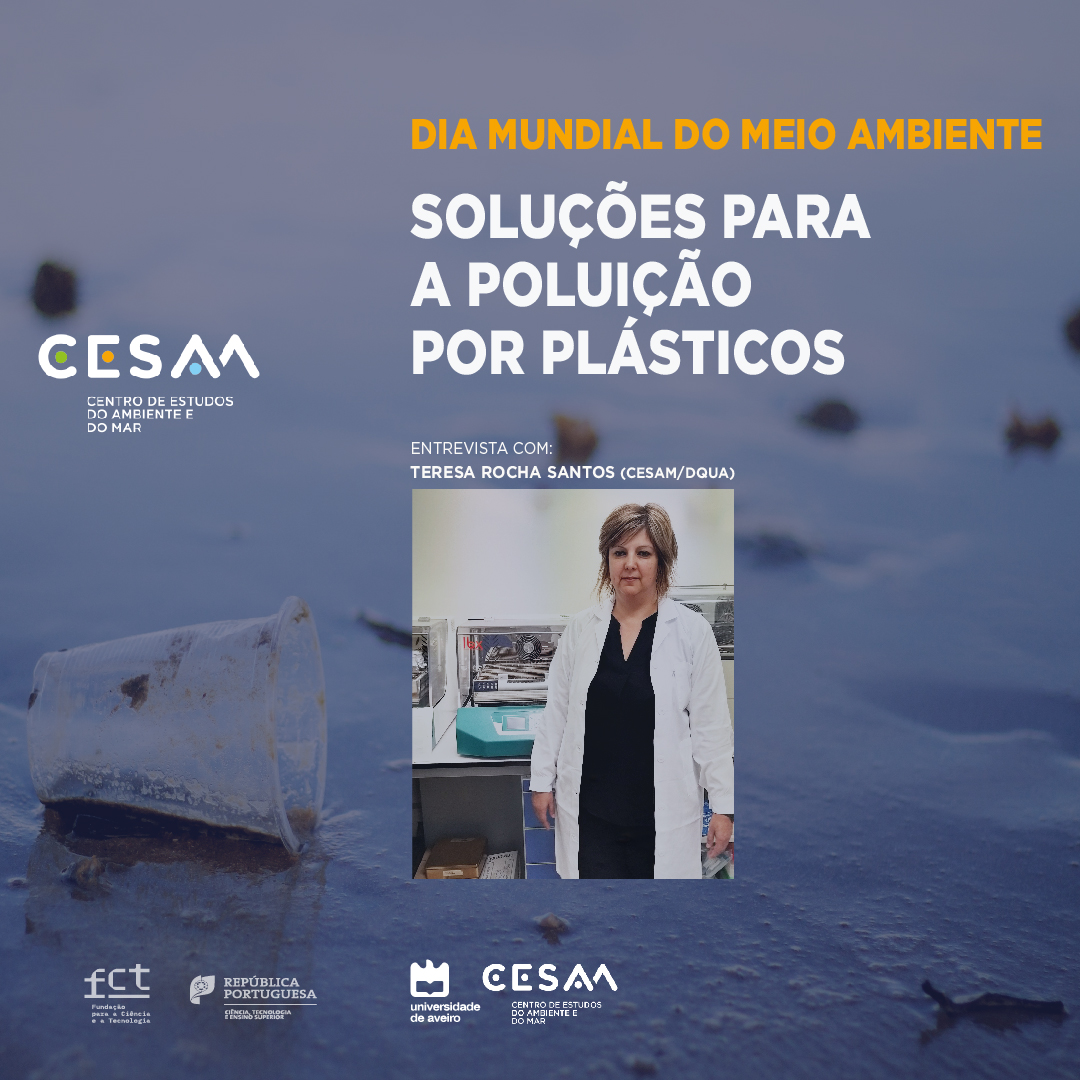World Environment Day is celebrated on June 5th. The year 2023 marks the 50th anniversary of the United Nations Environment Programme (UNEP), the organization responsible for the annual celebration of World Environment Day. Over the years, the observance of this day has brought together organizations from civil society, academia, industry, and political power, becoming one of the largest global platforms for environmental awareness.
In 2023, the focus of this day is on the theme of plastic pollution, under the slogan “Combat Plastic Pollution.” The United Nations Environment Programme, on its website, states that “the rapid growth in plastic pollution levels poses a serious global threat, negatively impacting the environmental, social, and economic dimensions of sustainable development. If the current trend continues, the amount of plastic waste entering aquatic ecosystems could almost triple by 2040.”
As part of the celebration of this day, we spoke with Teresa Rocha Santos (CESAM/DQUA), whose work is related to the theme of plastic pollution.
CESAM Communication: “If you had to highlight just one, what would be the risk of plastic pollution that you would emphasize?”
Teresa Rocha Santos: The main issue with plastic pollution is its potential effects on ecosystems and human health. When we think about plastics (larger than 5 mm), these effects are obvious, and efforts have been made to minimize them as much as possible. Regarding plastics smaller than 5 mm, including microplastics and nanoplastics, the problem is more complex. Tests with very high concentrations have been carried out to predict their effects. However, these very high concentrations are usually not environmentally relevant, meaning they are much higher than the actual concentrations of microplastics and nanoplastics in the environment. This makes it difficult to understand their effects at the concentrations where they actually exist in the environment.
CESAM Communication: “What are the main issues [related to plastics] that your current research aims to address?”
Teresa Rocha Santos: To understand the effects of microplastics and nanoplastics, we need to know their concentrations in the environment. This requires the development of methodologies capable of quantifying and identifying micro and nanoplastics.
Microplastics can carry contaminants, and therefore we study the absorption of chemical compounds such as metals and PAHs in microplastics. We also use fungi like Z. maritimum to remove microplastics, which can be applied as tertiary treatment in treatment plants or in new treatment stations.
CESAM Communication: What kind of action or behavior would you recommend to an ordinary citizen to help in this ‘fight’ against plastic pollution?
Teresa Rocha Santos: The principles of the 3 Rs – reduce, recycle, and reuse – remain extremely important to prevent more plastics from entering the environment. It’s also important to avoid single-use plastics, dispose of plastics properly in recycling or waste bins, and when possible, choose biobased plastics that are biodegradable.
